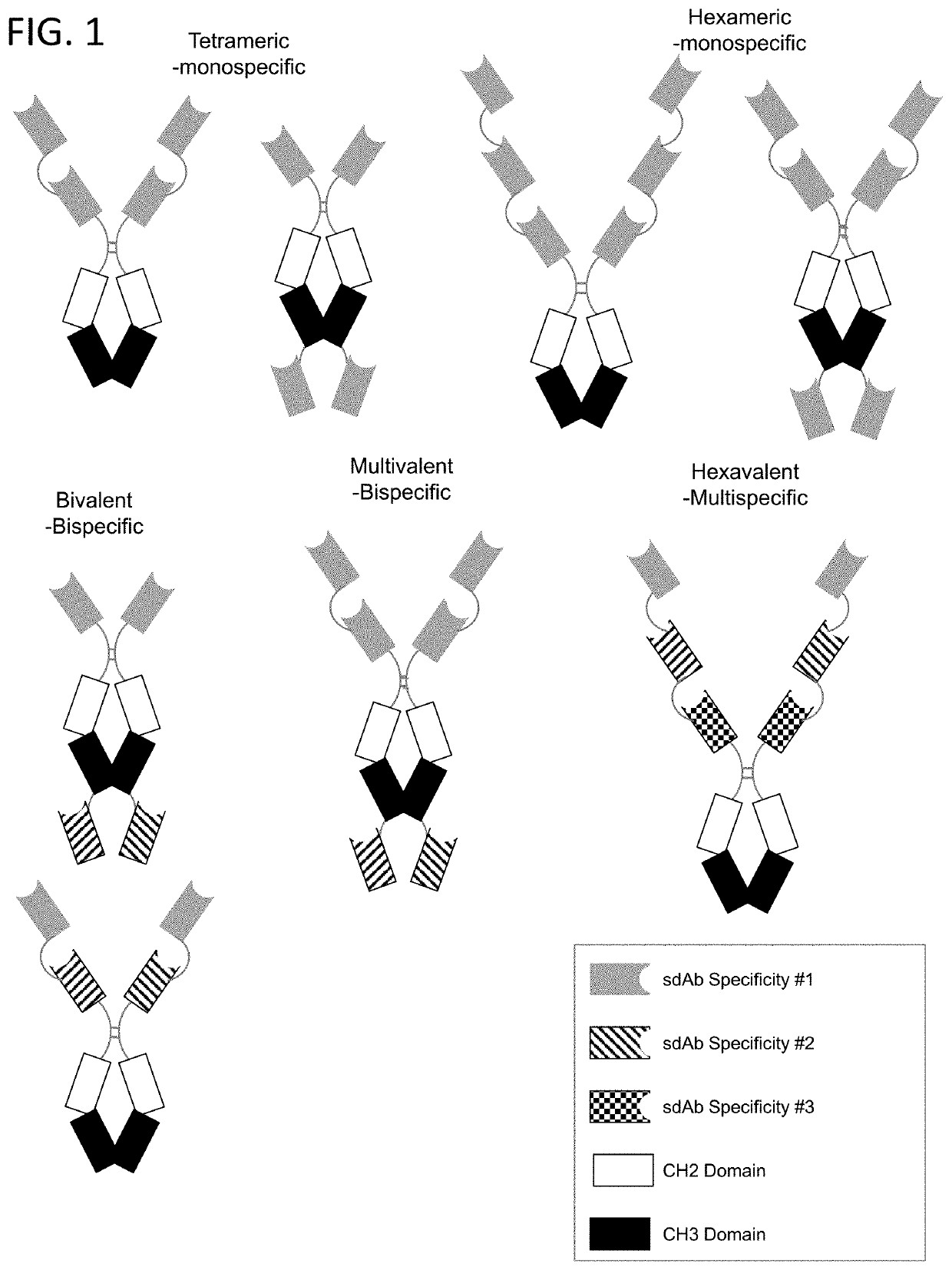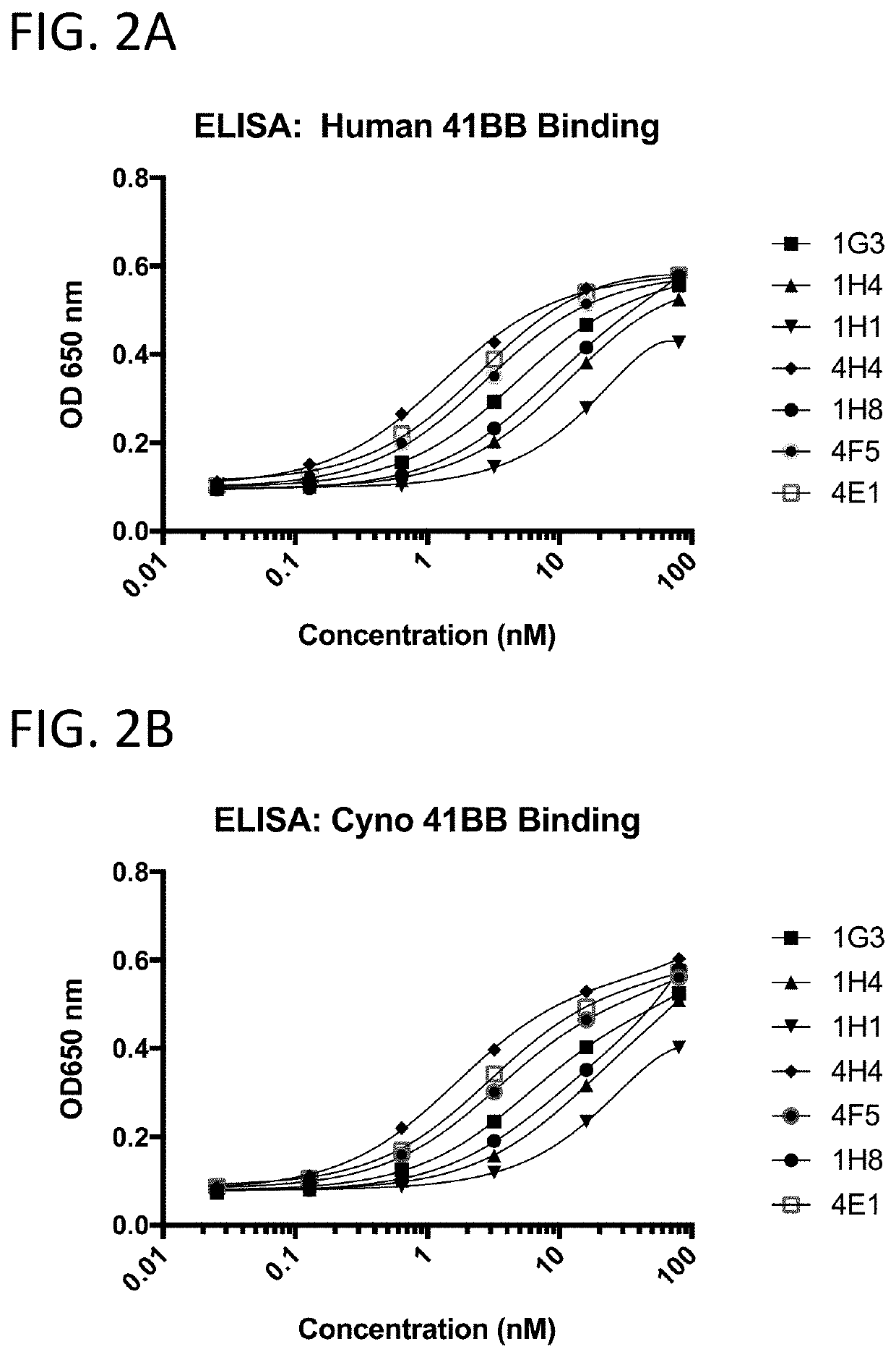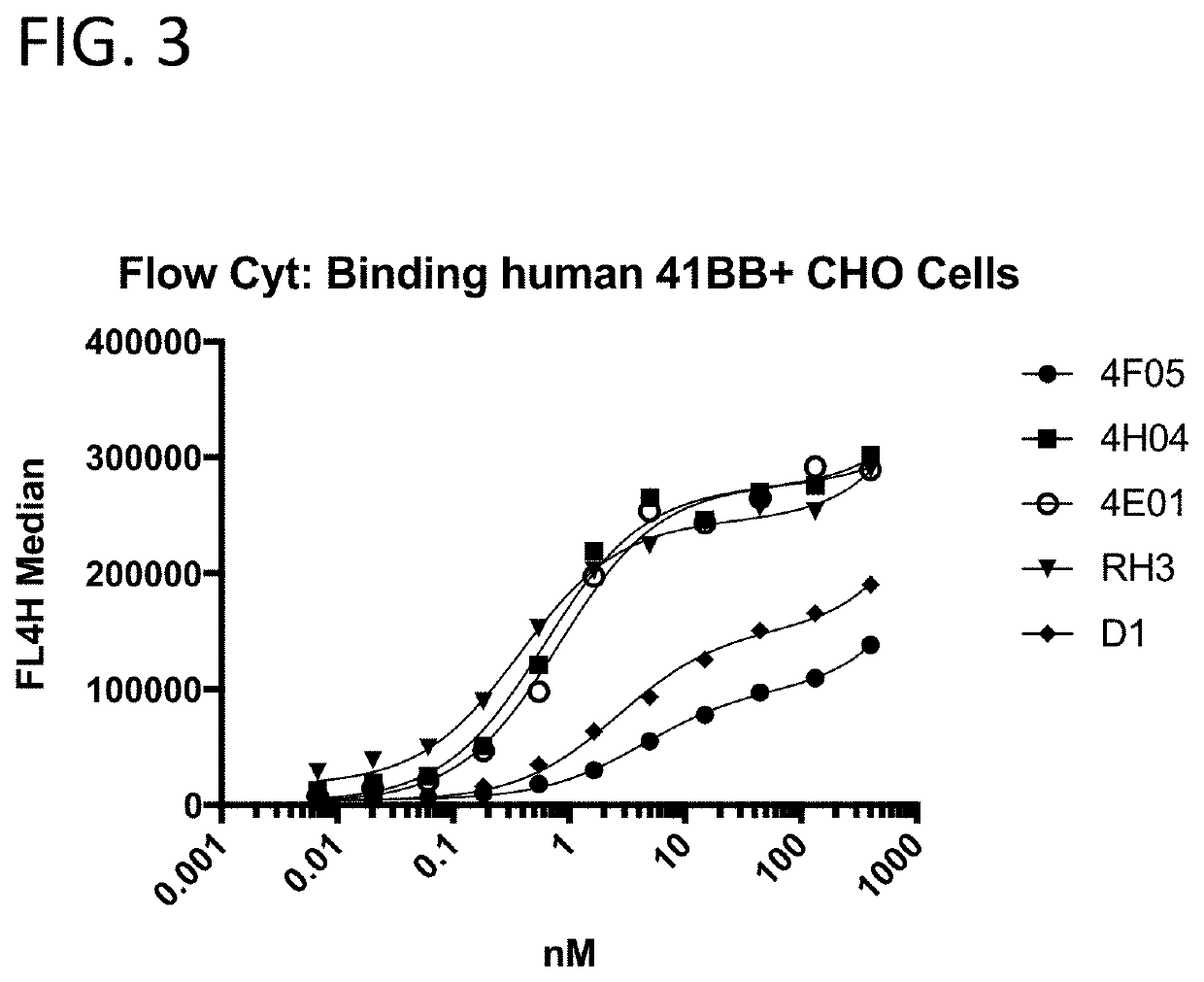Multivalent and Multispecific 41BB-Binding Fusion Proteins
a fusion protein, multi-specific technology, applied in the direction of peptides, drug compositions, immunological disorders, etc., can solve the problems that conventional bivalent antibodies are not ideal for this purpose, and achieve the effects of enhancing tumor destruction, dampening inflammatory insults, and enhancing treg proliferation
- Summary
- Abstract
- Description
- Claims
- Application Information
AI Technical Summary
Benefits of technology
Problems solved by technology
Method used
Image
Examples
example 1
41BB-Targeting Single Domain Antibodies Bind 41BB
[0209]The 41BB-targeting single domain antibodies (sdAbs) referred to herein as 1G3 (SEQ ID NO: 432), 1H4 (SEQ ID NO: 436), 1H1 (SEQ ID NO: 440), 4H4 (SEQ ID NO: 16), 1H8 (SEQ ID NO: 444), 4F5 (SEQ ID NO: 23), and 4E1 (SEQ ID NO: 20) bind recombinant human 41BB (FIG. 2A), cynomolgus 41BB (FIG. 2B). The 41BB-targeting single domain antibodies (sdAbs) referred to herein as 4F5 (SEQ ID NO: 23), 4H04 (SEQ ID NO: 16), 4E01 (SEQ ID NO: 20), RHO3 (SEQ ID NO: 25), and D1 (SEQ ID NO: 29) bind human 41BB expressed on the cell surface of CHO cells (FIG. 3). The 41BB-targeting sdAbs referred to herein as 4H04, RH03, and bind cynomolgus 41BB. For FIG. 2A, FIG. 2B, and FIG. 4, binding was assessed by ELISA wherein recombinant 41BB-mFc fusion protein (a fusion protein containing 41BB operably linked to a mouse Fc region) was immobilized on a Medisorp 96 well plate. For FIG. 3, binding was assessed by flow cytometry using 41BB expressing CHO cells, a...
example 2
41BB-Targeting Single Domain Antibodies Block 41BB
[0210]The 41BB-targeting single domain antibodies (sdAbs) referred to herein as 4F05 (SEQ ID NO: 23), 4H04 (SEQ ID NO: 16), 4E01 (SEQ ID NO: 20), RHO3 (SEQ ID NO: 25), and D1 (SEQ ID NO: 29) block the interaction between 41BB and its ligand 41BBL. All single domain antibodies tested, with the exception of RH3 blocks the interaction between 41BB and 41BBL. Blocking was assessed by flow cytometry using a recombinant 41BB fusion protein and 41BB expressing CHO cells, data is presented as median fluorescence intensity.
[0211]In contrast to the 41BB sdAbs of the disclosure, conventional bivalent anti-41BB antibodies do not induce 41BB signaling unless further clustered with an exogenous crosslinking anti-human IgG antibody. FIG. 6 demonstrates the inability of a conventional bivalent anti-41BB antibody PF-05082566, which is disclosed in US Patent No. 8,337,850, to induce 41BB signaling unless further clustered with an exogenous crosslinkin...
example 3
PDL1-Targeting Single Domain Antibodies Bind PDL1 and Block the Interaction Between PLD1 and PD1
[0212]The studies presented herein use an exemplary PDL1 single domain antibody (sdAb), referred to herein as 28A10 (SEQ ID NO: 100) to demonstrate that the PDL1-targeting sdAbs of the disclosure bind cell surface PDL1 (FIG. 7A) and block the interaction of PDL1 with PD1 (FIG. 7B). Binding was assessed by flow cytometry on PDL1 expressing CHO cells, and blocking was assessed by flow cytometry using a recombinant PD1 fusion protein and PDL1 expressing CHO cells. The data presented in FIGS. 7A and 7B are presented as median fluorescence intensity.
PUM
 Login to View More
Login to View More Abstract
Description
Claims
Application Information
 Login to View More
Login to View More - R&D
- Intellectual Property
- Life Sciences
- Materials
- Tech Scout
- Unparalleled Data Quality
- Higher Quality Content
- 60% Fewer Hallucinations
Browse by: Latest US Patents, China's latest patents, Technical Efficacy Thesaurus, Application Domain, Technology Topic, Popular Technical Reports.
© 2025 PatSnap. All rights reserved.Legal|Privacy policy|Modern Slavery Act Transparency Statement|Sitemap|About US| Contact US: help@patsnap.com



